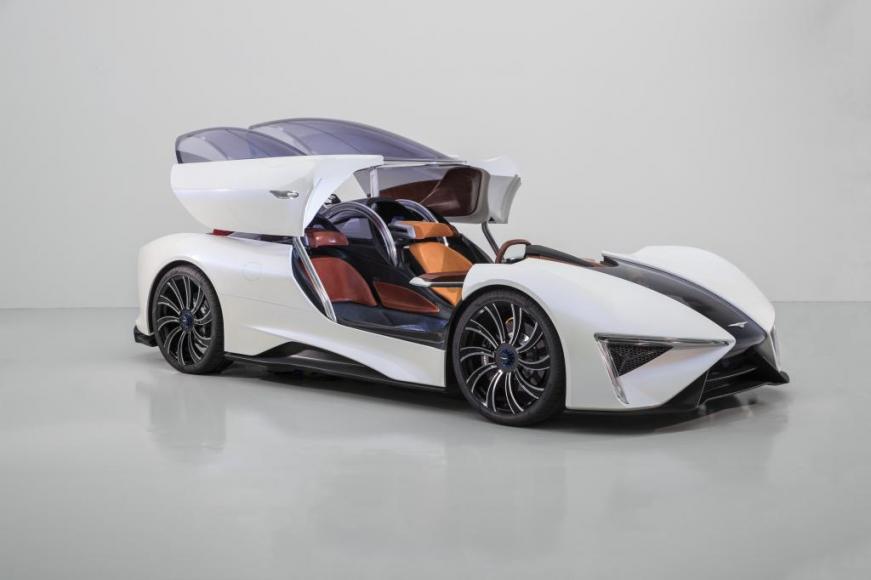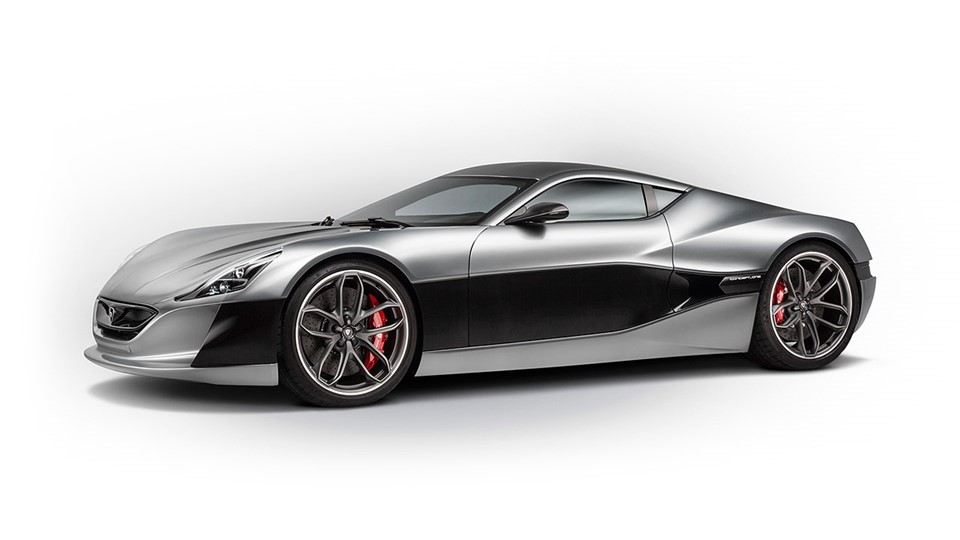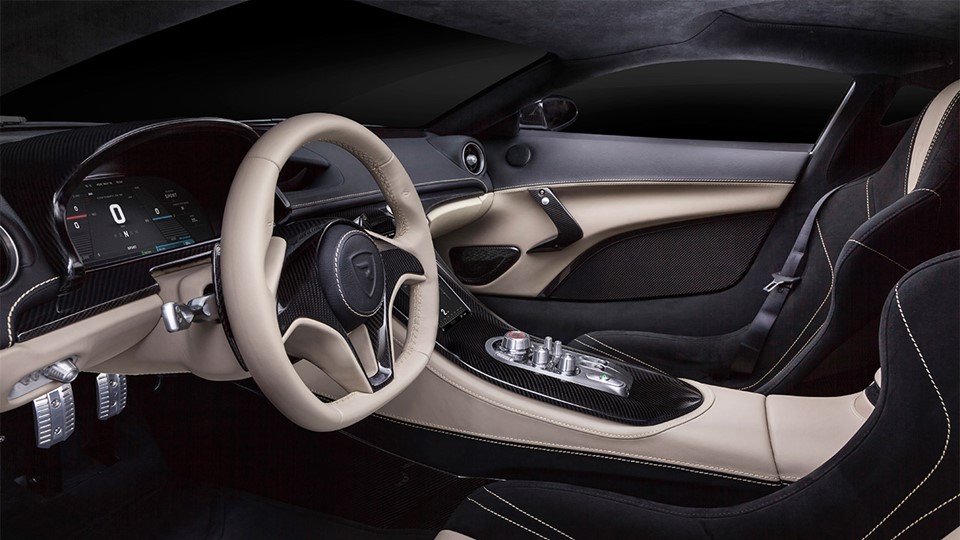Cutting-edge technology is shaping the transportation of tomorrow, on the road and in the air. Thanks to constant research from established car manufacturers and massive investments by industry leaders like Tesla, electric engines and cars are quickly becoming more reliable and mainstream. What once were unappealing designs are now turning into “supercars” and “hypercars”: faster, sleeker, hipper.
For those frustrated of sitting in traffic, for those annoyed by a taxi or a helicopter commute to the airport, flying cars are becoming a reachable future. They aren’t exactly new: it’s been a regular topic and a dream for almost a century, ever since Eddie Rickenbacker wrote about it in 1924. In today’s automotive landscape, where most brands go for a premium strategy, no other vehicle will express a sense of innovation like a flying car. Imagine picking up a guest with your PAL-V or AeroMobil at the airport or station and fly-driving to your home? Simply unforgettable.
A new mobility era is taking shape at all corners of the earth. Here’s a look at what’s coming.
NIO EP9
Collecting records as the fastest electric car in the world (Germany – October 2016, USA – February 2017), the Chinese NextEV NIO EP9 claims a 0-100 km/h of 2,7 seconds, a top speed of 313 km/h and an impressive range of 426 km. Other noteworthy feature: the EP9 can achieve full charge of the battery system in just 45 minutes.
DENDROBIUM
The Dendrobium is a high performance, 2-seater all-electric sportscar built by Singapore-based Vanda Electrics and partner Williams Advanced Engineering (Formula E championship’s battery supplier). The futuristic design includes an automatic synchronized roof and doors, resembling a fully-opened dendrobium orchid. This unique feature improves access to the cockpit, making it easier than other hypercars. When fully developed, Dendrobium has performance targets sets to 321km/h and 0-100km/h in 2.7 seconds. The first model is expected to hit the roads by 2020.
CONCEPT ONE
Croatia-based Rimac Motors is fine-tuning its Concept One for 2018. The Concept One’s timeless design features elegant and sleek lines that are not just beautiful, but also functional. Each surface and air intake serve a delicately balanced purpose – performance and efficiency. Inside, the seats position the passengers low and close to the center of gravity of the vehicle. According to Rimac, this model should reach 100 km/h in just 2,5 seconds, with a maximum speed of 355 km/h and a range up to 350 km.
GT96
The Techrules GT96 is a turbine-recharging electric hypercar, which means it also generates electricity to charge its batteries, essentially extending the range up to 1,170 km from 80 liters of diesel. The aerospace-inspired design is optimized for aerodynamic efficiency, with a striking modular three-cockpit design that has been crafted by world-renowned automotive designers, Fabrizio and Giorgetto Giugiaro. The seats feature wrap-around headrests containing speakers and a microphone to enable communication between passengers and the driver. There is also an option to have cameras displaying the faces of occupants to one another, allowing them to video chat, with fold out screens for the passengers.
AEROMOBIL
As a car, it fits into any standard parking space, uses regular gasoline, and can be used in road traffic just like any other car. As a plane, it can use any airport in the world, but can also take off and land using any grass strip or paved surface just a few hundred meters long. The 2-seater prototype, which has been flight-testing in real conditions since October 2014 can transform in seconds from an automobile to an airplane and comes with avionics equipment, autopilot, and an advanced parachute deployment system. The company announced the car’s top speed on the road in excess of 160 km/h and 200 km/h while flying. It can fly for 700 km before running out of gas. Private Pilot License (PPL) is recommended. Training requirements for this license vary country by country, but a minimum 40 hours of flight training is strongly recommended.
PAL-V
PAL-V Liberty is officially the first flying car. Thanks to numerous patented technologies, the dimensions of this dream come true do not exceed those of a regular car. It therefore blends perfectly with everyday road traffic and car parks, yet offers a new level of mobility. The PAL-V Liberty’s lightweight design enables a range of 1,200 km driving or 400 km to 500 km flying. Maximizing ease of use and comfort, the company announced a minimal take-off distance of 180 meters, a 3-wheel design for smooth driving and stabilizers making the Liberty 80% less affected by turbulence in the air. The Liberty will be available in 2 versions: the full-option Limited Pioneer Edition will come first, followed by the Sport Edition. The Pioneer Edition was released for sale at the end of February, starting at $599,000. The first step is to ensure yourself of a position on the waiting list. First deliveries in Europe are anticipated end of 2018.
With proofs of concept well underway and fewer technical challenges than self-driving cars, flying cars are the next best innovation to follow. About a dozen companies around the world, from startups to giant aerospace manufacturers, are currently working on prototypes – including Google’s co-founder Larry Page’s secretive Zee.Aero. With massive investments and public figures pouring millions on research and development, the race to make this longtime dream happen is definitely taking off.
 Geoffrey Ravoire
Geoffrey Ravoire
Founder of UNITIATE, Geoffrey is a Marketing Expert, Luxury Specialist and Hospitality Enthusiast. Wherever he goes, his early career and personal interests have always helped him nurture and cultivate a passion for the Travel and Leisure industries. French born, Geoffrey has accumulated an extensive experience abroad, thanks to regular visits to foreign countries but also thanks to years of expatriation. Currently based in Chicago, Geoffrey has already lived and worked in New York, Shanghai, Singapore and Monaco. You can meet Geoffrey on Twitter and Linkedin.





























